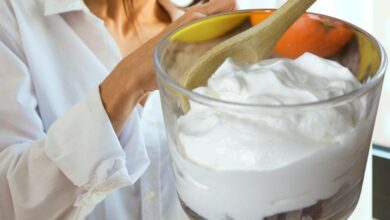Where to Find Glutamine in Food?”Foods High in Glutamine: A Guide to Natural Nutrition”

Everyone is asking for Where to Find Glutamine in Food ?Glutamine is a non-essential amino acid naturally present in the human body. Known for its role in muscle growth among bodybuilders, it also helps alleviate intestinal issues. But which foods are rich in glutamine? Let’s explore its sources, benefits, and recipes to include it in your diet.
What is Glutamine?
Glutamine is synthesized in the body through the action of the enzyme glutamine synthetase, using ammonia and glutamic acid as precursors. While its production is regulated by the liver, its distribution is primarily in:
- Muscle tissues (~90%).
- Intestinal tissues, immune cells, and kidneys (~10%).
Functions of Glutamine in the Body
Glutamine serves diverse purposes:
- Structural Role: It aids in protein biosynthesis and maintains the intestinal lining.
- Functional Role: It contributes to mitochondrial energy production.
- Biochemical Role:
- Regulates acid-base balance.
- Participates in nitrogen metabolism.
- Plays a role in the citric acid cycle.
- Acts as a precursor for glutamate synthesis.
Causes of Glutamine Deficiency
While a balanced diet typically meets the body’s glutamine needs, deficiencies may occur due to:
- Dietary Issues: Poor protein intake or poorly planned vegetarian/vegan diets.
- Physical Strain: Overtraining in athletes or intense physiological stress.
- Health Conditions: Severe tissue damage (e.g., burns, accidents) or illnesses that weaken the immune system.
Recommended Intake of Glutamine
Currently, there are no official daily intake recommendations for glutamine. However, experts estimate that a balanced diet provides approximately 3 to 6 grams of glutamine daily, which suffices for healthy individuals.
Foods Rich in Glutamine
Protein-rich foods are the best sources of glutamine. Below is a table of glutamine content in common foods:
| Food | Weight (g) | Glutamine (mg) |
|---|---|---|
| Beef | 100 | 1200 |
| Eggs | 100 | 600 |
| Tofu | 100 | 600 |
| Corn | 100 | 400 |
| Skimmed Milk | 100 | 300 |
| White Rice | 100 | 300 |
Other moderate sources include chicken, pork, cottage cheese, nuts, lentils, legumes, cabbage, peanuts, and parsley.
Recipes and Meal Ideas Rich in Glutamine
H2: Breakfast Ideas
- Scrambled Eggs with Toast and Fruit
- French Toast with Cottage Cheese and Fruit
- Rice Pudding with Fresh Fruit
H2: Lunch Ideas
- Beef and Lentil Stew
- Tofu and Corn Patties with Mixed Greens Salad
- Cabbage Gratin with Eggs
H2: Dinner Ideas
- Rice Salad with Lentils, Spinach, and Walnuts
- Braised Pork with Cabbage and Tomato Salad
- Parsley Flan with Tomato and Onion Sauce
Conclusion
Glutamine is an essential amino acid for maintaining overall health, supporting muscle growth, and promoting intestinal well-being. Including glutamine-rich foods in your diet ensures adequate intake to meet your body’s needs.
Pro Tip: Incorporate diverse sources like beef, tofu, eggs, and lentils into your meals for balanced nutrition.
References
- Aledo JC, “Degradation of glutamine in rapidly dividing cells: Waste or investment.” BioEssays, 26 (7): 778-785.
- Brosnan JT, “Inter-organ amino acid transport and its regulation.” J Nutr, 133: 2068S-2072S, June 2003.
- Yuneva M. et al., “Glutamine deficiency, but not glucose, induces MYC-dependent apoptosis in human cells.” The Journal of Cell Biology, 178 (1): 93-105, 2007.
Essential Stacks Gut L-Glutamine Powder – Made in USA – Pure L Glutami

Nutricost L-Glutamine Powder (500 Grams) (Blue Raspberry)

Designs for Health GI Revive Gut Health Powder – L Glutamine & Citrus




